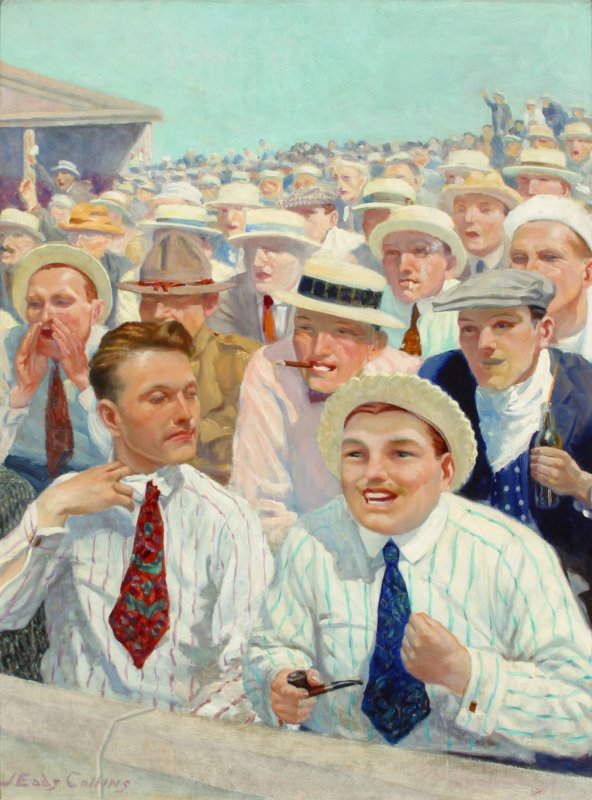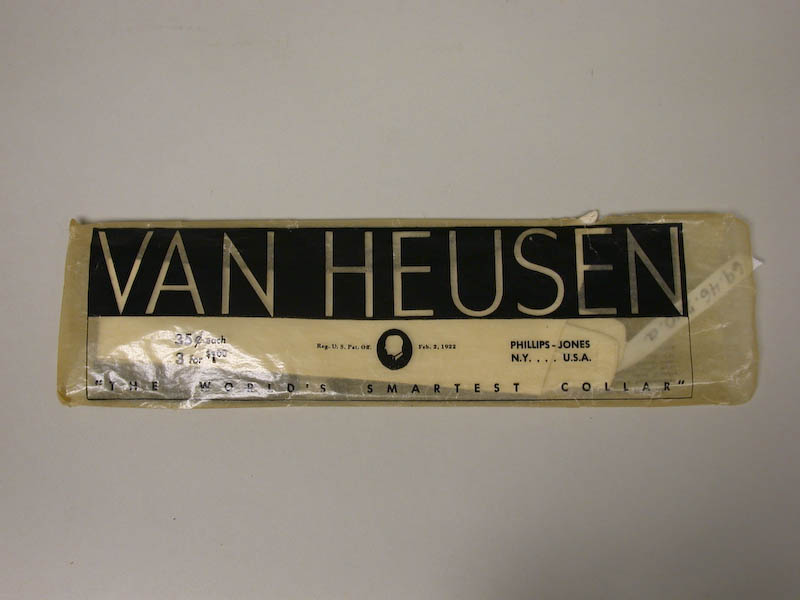One constant theme we see in Hagley’s museum collections is a pattern towards making just about everything more technologically advanced or innovative than what it was. Men’s fashions were no different in the early 1900s with the move from detachable shirt collars made from starched cotton to the more modern celluloid. DuPont got into this business in 1915 by acquiring the Arlington Company located in New Jersey. Arlington had been manufacturing a type of celluloid named Pyralin which was used in many products including detachable collars.
By 1919 DuPont was advertising their new Challenge Cleanable Collars made from cotton sandwiched in-between two layers of Pyralin plastic material. The painting below is an advertising painting used to promote these collars. It appeared on the cover of the DuPont Magazine September 1919 issue.

DuPont Advertising Painting: A Hit - Challenge Cleanable Collars (1918)
Artist John Collins (1881-1938)
As you can see the man on the right is wearing the “new” collar and is quite comfortable. The old fashioned collar, worn by the man on the left is obviously not fitting well and spoiling his time at this event. This kind of imagery was commonly used in promoting the “new” over the “old” ways for marketing purposes.


(Left) Van Heusen cotton collar. Cotton collars were sold flat with instructions on how to starch and iron into shape. (Right) Challenge Cleanable Pyralin Collar. Celluloid collars were sold in boxes already shaped.
The time and expense required to keep men’s shirts clean were some of the reasons that detachable collars were first created. The shirt did not get as dirty as the collar and if you could wash them separately, you would not have to wash the entire shirt so often. Eventually even washing and ironing cotton collars took a lot of time, energy and money especially for single men. DuPont marketed the Challenge Cleanable collars saying that they were so easy to clean “that a man could clean it himself” in less than one minute with just water and a cloth! They were excellent for casual and business wear but worked particularly well for traveling men. Made in more than 20 different styles, these new collars were a bargain.
The museum’s collection contains many samples of collars and cuffs made from cotton and Pyralin as well as other materials made from celluloid. Many items in these collections came to Hagley from Charles Rutledge who worked for DuPont. Rutledge created a popular program for the public that compared objects used in the past made out of natural materials with those made out of these new innovative synthetics.
Debra Hughes is the Museum Curator of Collections and Exhibits at Hagley.
